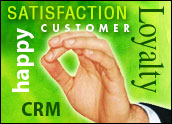
The dismal state of the economy is causing companies everywhere to reassess their marketing budgets to ensure that they’re allocating their limited marketing funds in the most productive ways possible. In many cases, this means curtailing, postponing or even eliminating previously planned marketing expenditures. In other cases, companies are actually investing more aggressively in various types of marketing programs, sensing an opportunity to capitalize on the grim economic headlines.
Companies are making changes to their product and service portfolios, revisiting their media planning and revamping their brand positioning and go-to-market messages. Companies are also shifting more of their marketing spend to emerging channels and marketing programs that may be more cost-effective than the traditional alternatives. In short, the recession is having a profound impact on nearly all marketing-related activities, including those related to the classic “4 Ps” of marketing: product, promotion, pricing and placement.
According to the January benchmark report “Recessionary Marketing: How Best-in-Class Companies are Weathering the Storm,” 82 percent of companies have reallocated their marketing spend to varying degrees on account of the deepening economic crisis. For only 8 percent of companies has the current economy had no effect on their planned marketing spend for 2009. An additional 9 percent of companies acknowledge that while they have yet to revamp their marketing budgets in light of the current economic crisis, significant adjustments are likely to be made in the near future, depending on consumer spending trends and various other factors.
Shifting From Traditional Advertising to New Programs
Aberdeen research reveals that 60 percent of Best-in-Class companies have cut their previously allocated marketing spend in traditional media, 18 percent by more than half. Only 18 percent of Best-in-Class companies currently have no plans to reduce their expenditures related to traditional advertising, and only 6 percent plan to increase their spending in this area. In some cases, the ability to shift marketing spend is limited by the commitment of ad time booked during the 2008 upfront season (although many media buyers are asking TV networks to roll back advertising prices in the current scatter market). With the reallocation of marketing spend to email and online marketing comes the need to commit additional resources to email marketing campaign development and management and to ensure that the company’s software and hardware infrastructure is up to par and scales accordingly.
The recession is also causing some marketers to rethink their trade promotions. Consumer brand companies typically spend upwards of 15 percent of revenue on trade promotions, which involve temporary price cuts to encourage reseller channels to reduce retail prices for consumers. Generally speaking, only about half of all trade promotions are evaluated to determine the return on investment in terms of such metrics as increase in volume push and increase in margin. Aberdeen research reveals that 45 percent of Best-in-Class companies have cut their trade promotion spending by between 10 percent and 50 percent, no doubt owing to the difficulty of measuring baseline lift and overall trade promotion effectiveness.
Also under increased scrutiny are large marketing, technology and other industry events, a record number of which have been canceled in recent weeks due to the current economic environment and the anticipated impact on event attendance as well as vendor sponsorship. Aberdeen research findings underscore the trend, revealing that 62 percent of Best-in-Class companies have reduced their marketing spend on industry events, conferences and trade shows, with 21 percent cutting their spend by more than 50 percent. Only 15 percent of Best-in-Class companies have increased their marketing spend on events and tradeshows. For most companies, the majority of funds originally earmarked toward industry events and tradeshows has either migrated to other marketing programs or simply been eliminated.
While traditional advertising programs and industry trade events may be on the decline in terms of marketing investment, a number of other channels and programs are gathering steam. A good example is social media. Today a growing number of companies are deploying technology-enabled solutions for leveraging word of mouth as a way to drive marketing improvement, as discussed in the new Aberdeen benchmark report “The ROI on Social Media Marketing: Why It Pays to Drive Word of Mouth.” By turning consumers into brand advocates and building market awareness in an exponential manner, social media marketing can be a cost-effective way for a company to achieve some of its key marketing objectives. No wonder, then, that only 18 percent of Best-in-Class companies are reducing their marketing spend in social media marketing while another 68 percent are investing either the same as planned or even more aggressively in this area.
Companies are paying close attention to online marketing, in general. This category is broad in scope, encompassing everything from search engine marketing to Web-based promotions and sweepstakes. Aberdeen research reveals that 41 percent of Best-in-Class companies, compared to 29 percent of Laggards, have increased their marketing spend on online and interactive marketing. The lower deployment costs and ability to accurately measure performance in terms of Web site registrations, coupon redemptions, etc., are no doubt key factors in the decision to increase investment in online marketing — although it must be noted that a comparable percentage (42 percent) of Best-in-Class companies, compared to 37 percent of Laggards, have reduced their marketing spend in this area.
Aberdeen research reveals that 69 percent of Best-in-Class companies, compared to 38 percent of Laggards, currently engage in search engine marketing / optimization. While 42 percent of Best-in-Class companies have cut their search engine marketing budgets (24 percent of them by less than 10 percent), an additional 38 percent have increased their spending in this area. In fact, 91 percent of Best-in-Class companies indicate that search engine marketing has higher priority now than before the recession.
Or consider mobile marketing. Through a confluence of technologies and standards related to mobile devices, including third-generation (3G) networks and data packages, the mobile Internet has now reached a critical mass. As more consumer brands are discovering, the mobile Internet can now enable large-scale mobile marketing activities capable of engaging consumers in unprecedented (and largely affordable) ways. The fact that mobile marketing is still somewhat nascent and experimental in nature may explain why 28 percent of Best-in-Class companies are spending less in this area. On the other hand, a slightly larger percentage (31 percent) of Best-in-Class companies are staying the course, with 16 percent of them actually increasing their budget for mobile marketing campaigns. “Getting mobile marketing right is a great challenge and opportunity,” says Soren Schafft, senior vice president, North America sales and marketing, Fox Mobile Distribution. “Mobile marketing can make media more direct, relevant and provide a direct path for interactive engagement and contextual commerce.”
Reassessing Marketing Messages and Pricing Tactics
According to the same January benchmark report, more than three-quarters (76 percent) of Best-in-Class companies have reassessed their marketing and advertising messages in the context of their cash-strapped buying audiences and modified these messages to better resonate with consumers who, in many cases, have become increasingly risk averse and price sensitive. In many cases, companies are stressing reliability, durability, performance and, more than anything else, value. Only 22 percent of Best-in-Class companies have yet to modify their marketing messages in response to the dampening mood and changing purchase behavior of a large portion of the consumer population.
At the same time, more than half (57 percent) of Best-in-Class companies have adjusted their product and/or service portfolios, in some cases creating more economical product bundles or doing the reverse — i.e., unbundling products and services and pricing them separately. Based on their demand forecasts, companies are taking steps to eliminate poorly performing products and solutions, shifting funds to product lines that seem better suited to weathering a recession, and even introducing new products and services that meet the needs of consumers on an austerity plan.
To that point, companies are also modifying their pricing tactics, including engaging in temporary price promotions and reduced thresholds for quantity discounts, in order to achieve their marketing and sales objectives. According to survey results, nearly three-quarters (74 percent) of Best-in-Class companies have modified their pricing tactics, including providing credit extensions to longstanding customers, to try to compensate for changes in consumer demand and purchase requirements. Some companies are simply selling less product for the same price.
Top Performers Use Five Battle-Ready Marketing Tools
According to Aberdeen research, Best-in-Class companies are investing in a number of specific technologies in response to the economic downturn. These “recessionary marketing tools” can play an instrumental role in driving precision marketing effectiveness and return on marketing investment — and not only in times of economic turmoil.
- Recessionary marketing tool #1: Email marketing software: When it comes to delivering relevant and cost-effective marketing messages, no vehicle can beat email. Sophisticated email marketing tools feature dynamic content delivery, making it possible to create email templates that deliver different, personalized emails to customers based on their stated preferences as well as personal profile information that might include behavioral, demographic, past purchases and other information. Landing page creation and optimization tools are integral components of effective email marketing. In light of the increasing emphasis on email marketing campaigns, it’s worth noting that 74 percent of Best-in-Class companies, compared to only 18 percent of Laggards, indicate that they have increased their email marketing effectiveness in the past year.
Based on previous Aberdeen research and according to multiple other sources, including the Direct Marketing Association and the CMO Council, email marketing outperforms virtually all other media in terms of ROI. Recent studies suggest that email marketing delivers one of the lowest costs per order while providing an ROMI (return on marketing investment) index that is upwards of 70 percent higher than any other direct-response marketing vehicle.
Also, relative to other vehicles, email marketing performance is easy to track and measure using such metrics as click through rates, deliverability, open rates, forwards — and, ultimately, conversions and revenue (discussed further in the Performance Metrics section). It’s understandable, then, that in light of the current economic challenges, 47 percent of Best-in-Class companies, compared to 26 percent of Laggards, have increased their marketing spend on email marketing. Only 14 percent of Best-in-Class companies, compared to 31 percent of Laggards, have made cuts in this area. In all likelihood, this was done as part of an overall cost cutting program as opposed to reallocating the funds to other channels.
- Recessionary marketing tool #2: Lead management software: Automated lead management and qualification technology use lead quality definitions to automatically prioritize leads, improving conversion rates and allocating resources more efficiently. An important component of lead management is lead nurturing, which is a relationship-building approach utilizing multiple media to support a prospect’s buying cycle with relevant information and engage in an ongoing dialog until qualified prospects are deemed “sales-ready.” A sales-ready lead is ultimately defined by the unique definition of a qualified lead within the organization.
The goal of a lead nurturing program is to support and nurture long-term opportunities with the hope that these prospects may represent future sales. Lead nurturing can span multiple channels and disciplines. Lead nurturing can also be executed with trigger marketing techniques that deliver relevant content based on the prospects behavior or activities across a Web site, telephone, email and other channels.
Marketers anticipate budget freezes and longer sales cycles as a byproduct of the economic downturn. As such, many current qualified opportunities may be on hold until the economy shows signs of growth. In essence, lead nurturing is a means of riding out the economic trough and ensuring your products or services are top of mind when the economy starts to pick up again.
- Recessionary marketing tool #3: Asset management system:Digital asset management solutions integrate with collateral customization and marketing automation technologies to provide seamless asset management through content distribution workflow. The goal is to improve brand compliance and eliminate repetitive tasks, ultimately increasing marketing ROI.
Related solutions include Marketing Resource Management (MRM) technologies, which typically provide document storage and retrieval as a subset of a larger group of features supporting marketing operations activities (event management, campaign management, etc.), Digital Asset Management (DAM) technologies, which provide functionality to manage, store and retrieve structured and unstructured data and is often used by marketing for digital archiving, document management and workflow (for collateral, text, photos, rich media, video, audio and more).
Aberdeen recently compared the year-over-year performance of organizations that adopted a marketing asset management solution (leveraging it for approximately one year) versus organizations that do not have marketing asset management solution. The research shows that organizations that had been using digital asset solutions for approximately one year achieved 11 percent higher average performance in terms of ROMI than those that did not have marketing asset management solutions. The research also shows that Best-in-Class organizations provide both sales and marketing access to the marketing digital asset tool.
The increase in ROMI is largely due to the fact that digital asset management solutions can speed the time it takes to locate a file, manage versioning, and centralize content for remote individuals or regional locations. Today only 34 percent of Laggards, compared to 50 percent of Best-in-Class companies, currently use marketing asset management systems. Leveraging content indexing functionalities on shared drives to deliver rapid searchable access to content translates into significant cost savings.
- Recessionary marketing tool #4: Marketing dashboard:Marketing dashboards, which provide a single digital display for tracking and measuring marketing performance, have become a necessary tool for optimizing marketing spend. A marketing dashboard can be used to track and measure the relative productivity of a channel over time as well as the current performance of any given campaign or marketing program.
Marketing dashboards should provide functionality that makes it possible to manipulate data and engage in if-then scenario analysis. Currently, more than twice as many Best-in-Class companies as Laggards (37 percent versus 18 percent) use marketing dashboards. An additional 35 percent of companies plan to implement a dashboard solution in the future — and better sooner than later, given the urgent need to both measure and improve marketing performance. “Using a marketing dashboard, we can track all sales, all balances, the yield, and most of the key expense lines for the entire company,” says Margo Georgiadis, Chief Marketing Officer of Discover Financial Services. “We can feed this information into campaign reporting and planning models and run scenarios quarter by quarter.”
The key is to figure out what marketing performance metrics to track and measure, and enhance the metrics over time. Currently, 37 percent of Laggards, versus 78 percent of Best-in-Class companies, lack defined performance metrics for measuring marketing effectiveness. Coming to an agreement on which metrics are most important to the marketing organization, as well as to the company as a whole, can be an arduous process.
Rather than assess what existing data can be accessed, aggregated and displayed in a marketing dashboard, companies should take a top-down approach, which means determining which metrics drive business growth and are strategic to the execution of the organization’s marketing programs. Also, because marketing performance measurement is a continuous improvement process, companies need to constantly refine their performance metrics. Business conditions never remain stable. It’s important, therefore, that companies put processes in place to adapt their metrics to meet those changing conditions.
- Recessionary marketing tool #5: Marketing automation software: Marketing automation software, which includes campaign and channel management tools, can be viewed as the choreographer of customer interactions. It is the combined set of tools that allows a company to categorize and profile its customers, design customized marketing campaigns, and evaluate the performance of marketing programs. It ties together the various touch points for customer interaction, linking to the salesforce automation system, the call center, and Internet-based customer interaction channels.
Marketing automation software enables a company to capture information from every customer touch point, to pass the information on to centralized customer database, and to retrieve outputs from the analytics modules to every touch point for execution. Ideally, the software should support both analytic and operational marketing processes and enable a company to view the activity and performance of all of its customer interaction channels simultaneously and in real time.
Higher Levels of Efficiency and Effectiveness
To help overcome at least some of the challenges of the current economic climate when it comes to attracting, retaining and increasing the value of profitable customers, companies are turning to five key marketing technologies: email marketing software, lead nurturing software, marketing asset management systems, marketing dashboards and marketing automation software. Taken together, and in conjunction with the right organizational resources, business processes and performance metrics, these technologies can help ensure continued marketing success.
In the end, companies have no choice but to strive for higher levels of efficiency and effectiveness across all aspects of their marketing operations in the face of persistently weak spending by consumers and businesses. For most companies, working toward achieving the desired results has required a dramatic reallocation of their planned marketing budget for 2009. In many cases, it has also required significant tactical changes to how companies go about executing each of the classic “4 Ps” of marketing.
Jeff Zabin is Research Fellow at the Aberdeen Group.























































The weak economy and then reduction of marketing budgets are causing a major shift to online advertising and marketing. We have noticed an increase in our clients requesting online marketing campaigns and improvement on their online presence. Traditional marketing strategies are still relevant and an important aspect of most companies strategy, but we have noticed that our clients are shifting their budgets with coordinated online marketing with their traditional marketing approach.
Tony
Interactive Web Solutions
http://www.iwswebsolutions.com
Irving Sarreal of Interactive Web Solution, http://www.iwswebsolutions.com, has notice an increase on our clients budget and online marketing initiatives. The two main from that is leading this online marketing initiative are Google.com/Adwords and Yahoo.com Search PPC.
Irving Sarreal also states that their clients are now also increasing their penetration into affiliate marketing program. "We are being encourage in the growth of our clients and new client online advertising budget"
Irving Sarreal
IWS Web & Ecommerce Solutions
http://www.iwswebsolutions.com